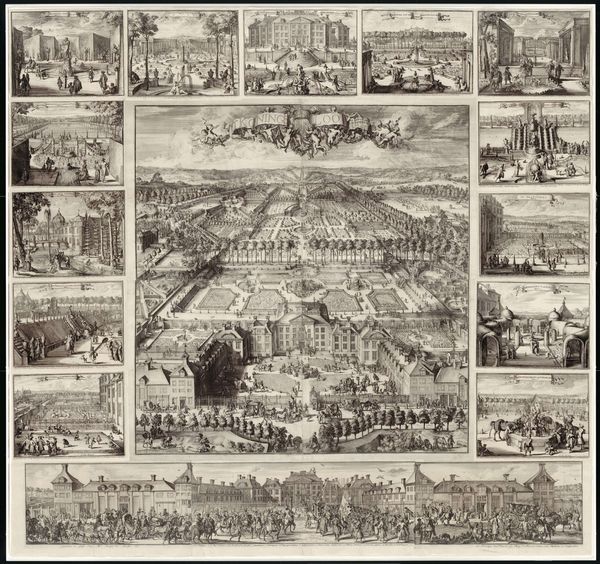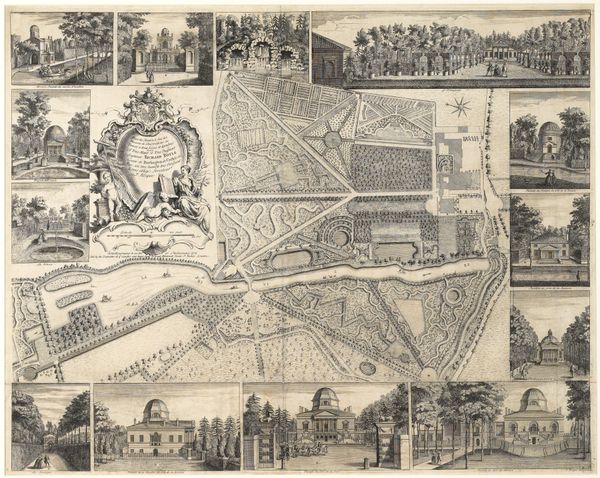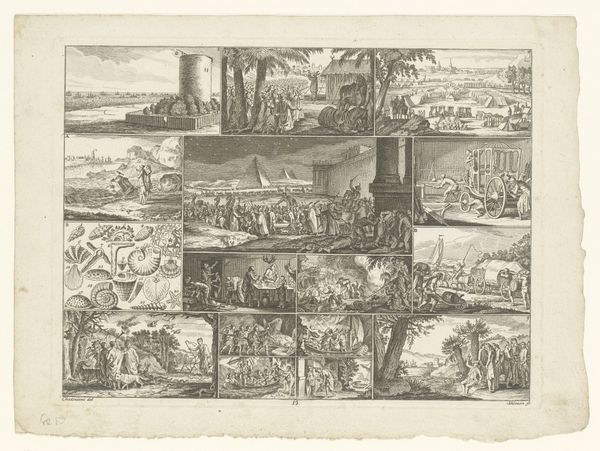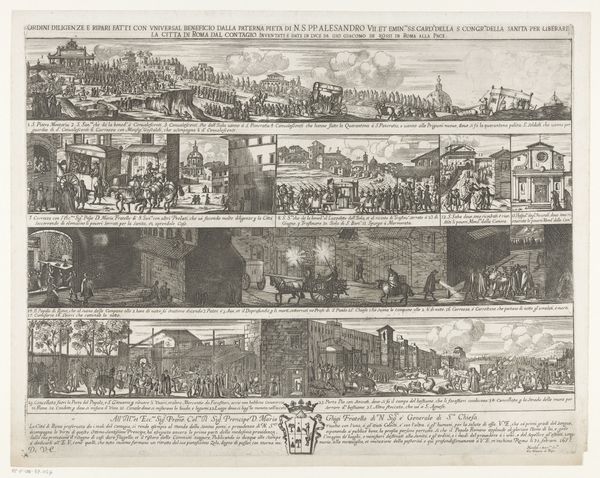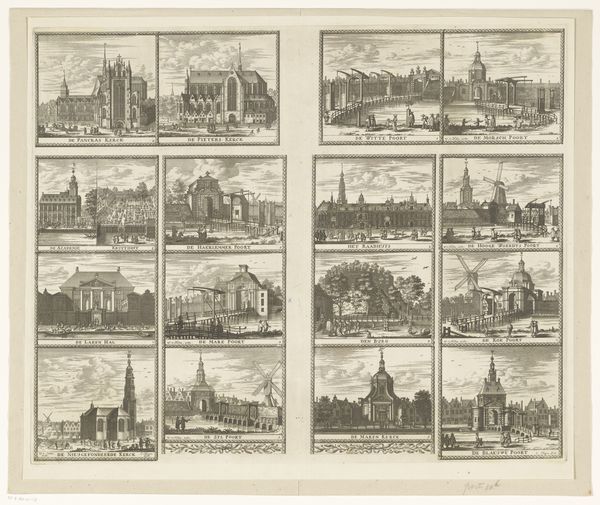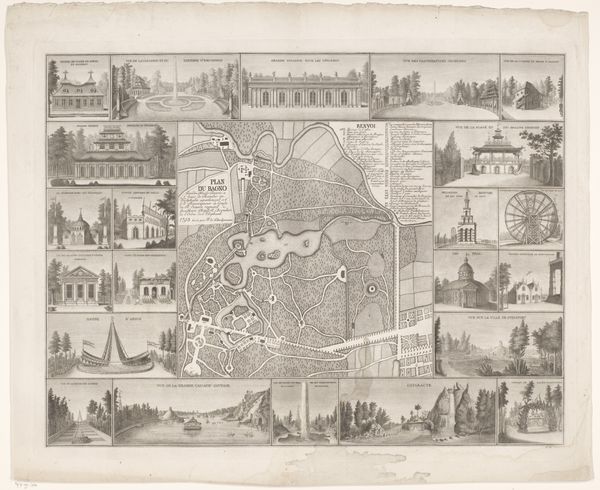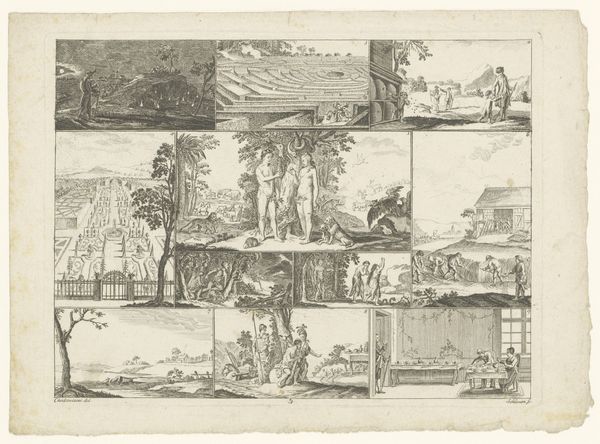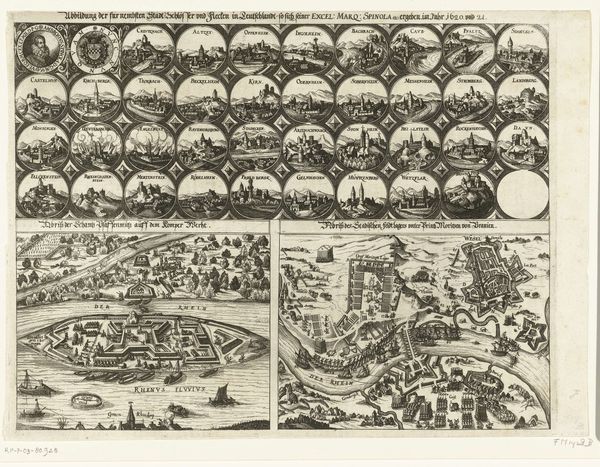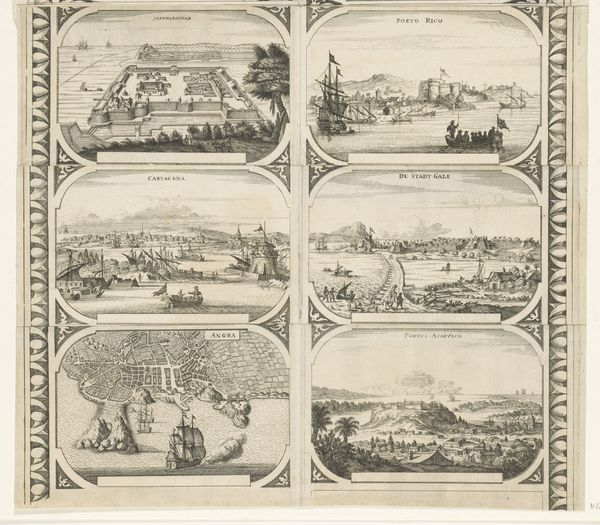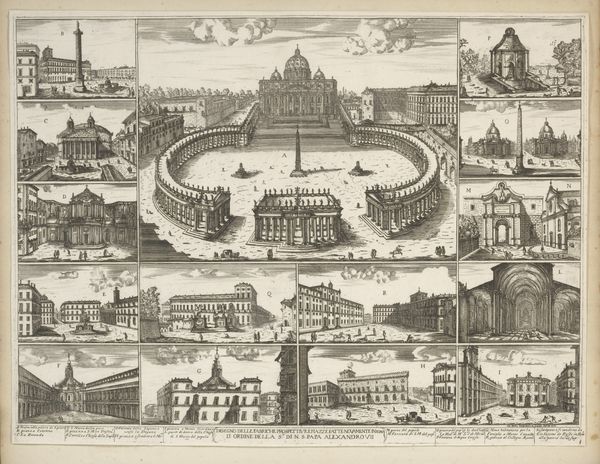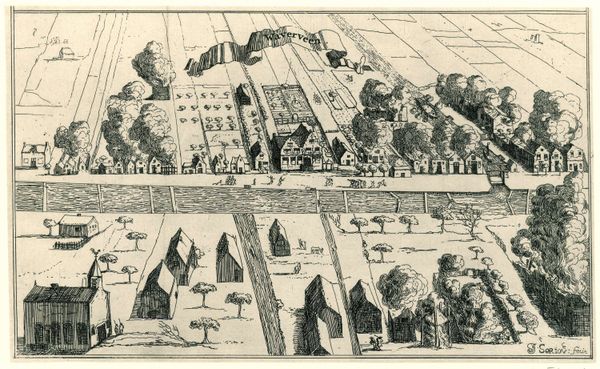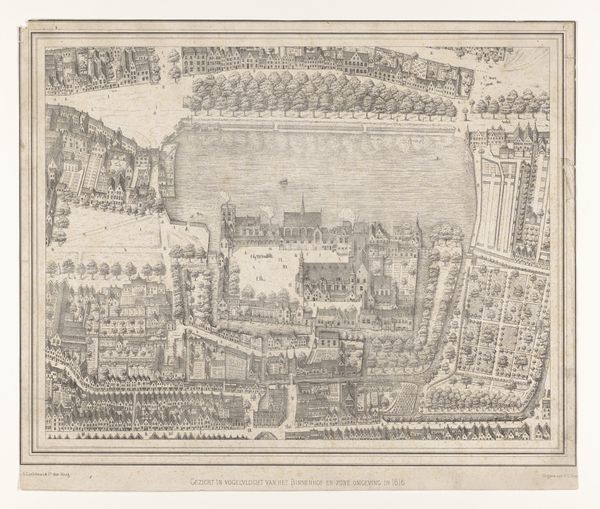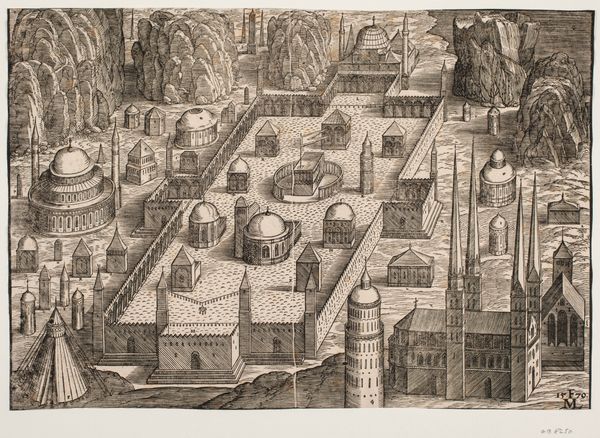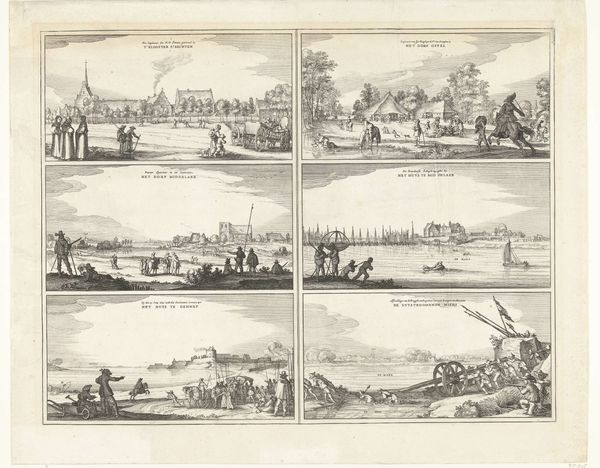
drawing, print, ink, engraving
#
drawing
#
baroque
# print
#
ink
#
cityscape
#
history-painting
#
italian-renaissance
#
engraving
Dimensions: height 413 mm, width 515 mm
Copyright: Rijks Museum: Open Domain
Editor: Here we have Giovanni Giacomo de' Rossi’s print, “Places in Rome Relating to the Plague,” from 1657. It’s a busy image, a composite view of Rome, but with an ominous undertone. I see funerals and what look like quarantine sites. How does this image speak to you, especially given its historical context? Curator: This print offers a window into the socio-political response to a major public health crisis. Look at how the artist has arranged these vignettes. It's not simply a collection of buildings; it's a curated narrative about power, disease, and the visible hand of the authorities. The plague was not just a medical phenomenon; it was a social leveler that exposed the vulnerabilities of urban life and the capabilities, or inabilities, of the ruling class. Notice how frequently authorities appear escorting, burying and punishing its populace? Editor: Yes, it is very ordered; almost propagandistic. Curator: Exactly. This piece engages with what we now call "medical topography"—visually mapping the city through the lens of disease. These images shaped public perception and likely reinforced certain social stratifications already in place. The print wasn't just about informing the public, it was about control and reinforcing Rome’s institutional power structures during crisis. Consider what's included and what's omitted. Editor: That makes me think about how cityscapes can function beyond mere documentation. It portrays not just Rome, but Rome’s response and political environment. It is so deliberate and ordered in it's approach to its grim subject. Curator: Precisely. This isn't just a historical record. It's an artifact of how Rome's socio-political institutions chose to represent their actions—a kind of public relations exercise during a crisis. Editor: Thank you. Thinking about it that way completely changes how I see it! Curator: Glad I could offer some perspective. Thinking about art as a form of political and social dialogue makes everything a lot more relevant.
Comments
No comments
Be the first to comment and join the conversation on the ultimate creative platform.
